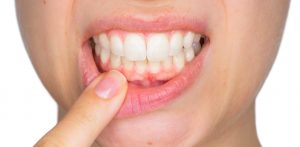1) Do utilize the ideal toothbrush
That implies a soft-bristled multi-tufted tooth brush, with a head that’s little enough to get comfortably all around your mouth, and a manage that’s easy to grip. Ask your dental expert or hygienist to demonstrate precisely how to use your toothbrush and any other health help, so that you understand you’re using them efficiently to get rid of biofilm (bacterial plaque) and not doing any damage in the process.
2) Don’t brush too tough or too often (more than two times a day).
Brushing too often– or too tough– can trigger gum recession, and damage the root surfaces of the teeth by abrading them. These surfaces likewise are not covered by the super-hard enamel that protects the crowns of your teeth (the part seen above the gum line), and for that reason they wear quicker. If your mouth requires a little freshening up in between, attempt consuming something fibrous like apples, carrots or celery.
3) Do floss a minimum of when a day.
It’s been said often times, many ways … and it’s still true. Flossing is the very best way to eliminate plaque in places where your brush just can’t reach: in between the teeth. Plaque that isn’t removed results in tooth decay and gum disease. So you can see where this is going. If you need a refresher in flossing methods, just ask your dental professional– however don’t overlook this vital part of your oral hygiene regimen. You’re just 50% done if you just brush! And toothpicks, while helpful, do not do the job that floss does.
4) Do not snack on sweet foods– and do not treat between meals.
According to the National Institutes of Health, tooth decay is the most common chronic disease of both grownups and children– even though it’s almost completely avoidable. Sugars are taken in by oral germs, which then launch acids that attack the teeth, triggering tooth decay (cavities).
5) Do the tongue test to inspect cleanliness of teeth.
Even after brushing, how do you understand whether you’ve cleaned your teeth effectively? You could chew an unique “revealing tablet” with a harmless dye that reveals any locations of bacterial plaque you have actually missed– or you might try another basic technique: Run your tongue all over the surface areas of your teeth, front and back.
6) Do inform your dentist if you discover bleeding swellings or gums, bumps, ulcers.

Numerous times, modifications in the environment of your mouth are harmless– but some might be early warnings of illness. That’s one more reason why routine oral examinations are so important for your oral health.
7) Don’t start bad oral health routines.
A few of these you already know: using any tobacco items, consuming extreme amounts of alcohol, and chewing on pencils or fingernails– all have negative effects for your oral health. Other bad habits are less widely known. Getting an oral piercing increases the chance for tooth cracking and gum issues. A clenching or grinding habit can trigger damage to your teeth, jaw joints and muscles, particularly during sleep when you are uninformed of it. And playing sports without a mouthguard multiplies your opportunities for oral injury. Ask your dental professional for recommendations on curbing routines that are damaging to your oral– and basic– health.
8) Do use fluoride tooth paste.
Scientific research study has actually regularly shown that fluoride is not only reliable at preventing cavities– it can also fix tooth enamel. Fluorine is a naturally taking place aspect that is completely safe when used as directed. The American Dental Association suggests utilizing simply a smear of fluoride-containing tooth paste on the tooth brush for toddlers and infants more youthful than age 3. Children ages 3-6 ought to use a pea-sized dab.
9) Do not brush or floss immediately after consuming acidic beverages (like soda, sports beverages and juices).
This might appear weird at first: isn’t that when you ‘d wish to brush? Actually it’s not, and here’s why: Acids “soften” the difficult enamel covering of your teeth by liquifying the shallow layer/s. Ever see how gritty your teeth feel directly after consuming a Coke? That’s the acid at work right away. Acids in sodas, sports drinks and juices dissolve calcium out of the surface area enamel by a process called de-mineralization. But saliva, which is rich in minerals, has a natural neutralizing and buffering capability that will re-mineralize enamel surfaces impacted by acid. However, this can take 30-60 minutes. That softened surface layer can quickly be gotten rid of with a tooth brush. Much like being over-vigorous, brushing right after you take in acidic food or beverages can have really negative repercussions for your teeth resulting in significant enamel disintegration. It’s best to wait a minimum of one hour to allow your saliva sufficient time to reduce the effects of the acidic attack.
10) Do beverage adequate water.
Mouth dryness increases biofilm (plaque) accumulation and your threat for both tooth decay and gum (gum) illness. Consuming plenty of water and keeping well hydrated has a number of health benefits for your whole body. Saliva not only buffers acids, as pointed out above– it also helps digestion, helps the mouth battle bacteria, and even has a role in protecting the teeth from decay.
